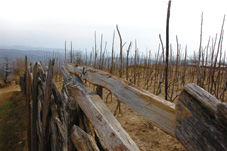
David Eristavi - Country of Liquid Sun
Monday, April 6
David Eristavi was born in 1847 in the village of Khidistavi. From 1867-1871, he studies at the Odessa University and later graduated from the St. Petersburg Medical Academy. Beginning in 1871, he worked with Droeba, Tiflisski Vestnik and Falang, and was the editor of the newspaper Kavkaz from 1882. Droeb was an influential Georgian political and cultural newspaper published in Tiflis from 1866 to 1885. Droeba first came out in Tiflis, the capital of the Russian Caucasus Viceroyalty, on March 4, 1866, to be published thrice weekly and then daily from 1877.
He began his literary career with poems and satirical articles. He had a perfect knowledge of French, English, German and Russian. He was the first Georgian cartoonist, he was engaged in photography as a hobby and he played the piano and flute very well. He was a member of the commission for the ac- curacy of the text for The Knight in the Pantherís Skin and one of the initiators of the creation of the Georgian Dramatic Society. As a writer and drama writer, he earned special popularity thanks to his historical play, Samshoblo (Fatherland), published in 1881, which was based upon the drama by the same name by French drama writer, Saardu. Eristavi beautifully adjusted Saarduís plot to the Georgian reality, giving national colouring to the play and reminding Georgians of the importance of devotion to oneís homeland by his performance on 20 January 1882.
Eristavi is the author of many plays, in fact, which were adjusted to Georgian reality and most of which were successfully staged in the Georgian theatre.
David Eristavi was married to Ekaterine, the daughter of prominent Georgian entrepreneur and maecenas, David Sarajishvili. Taking the advice of David Eristavi, Sarajishvili built a micro-distillery on his estate in Odzishi.
The basic grape varieties which were grown by the Eristavis were Rkatsiteli, Goruli Tetri, Tavkveri, Pineau and a small quantity of Izabela. There are 48 kvevris (wine amphoras) in the large Eristavi family wine cellar amongst which nine are two-ton, one is one-ton and the rest are relatively smaller. In order to avoid damage due to frequent earthquakes, all of the kvevris in the wine cellar were fixed with mortar. The Eristavis made special preparations for their vintage which started at the end of October or the beginning of November. They harvested an enormous amount of grapes whose juice of which could not be accommodated in the kvevris and so they were distributed to the peasants free-of-charge. It is not surprising, therefore, that the peasants respected the generous and kind Eristavis.





